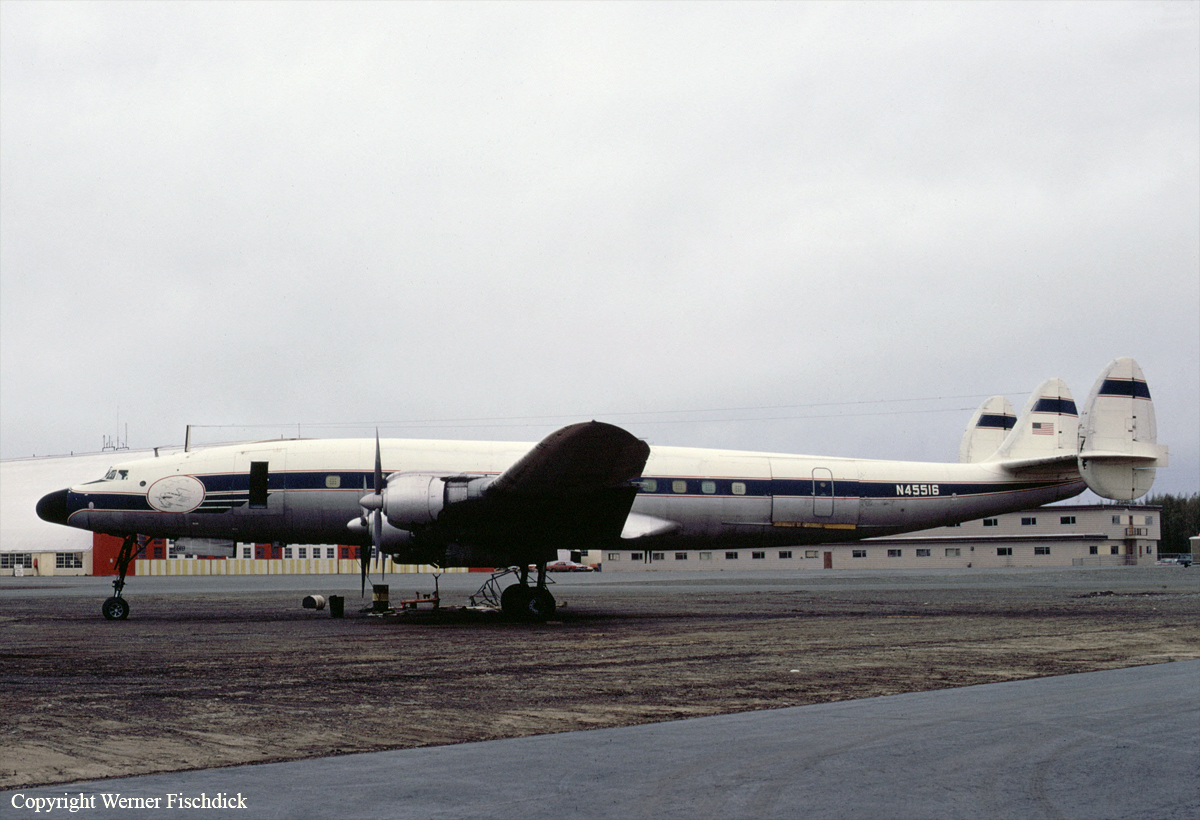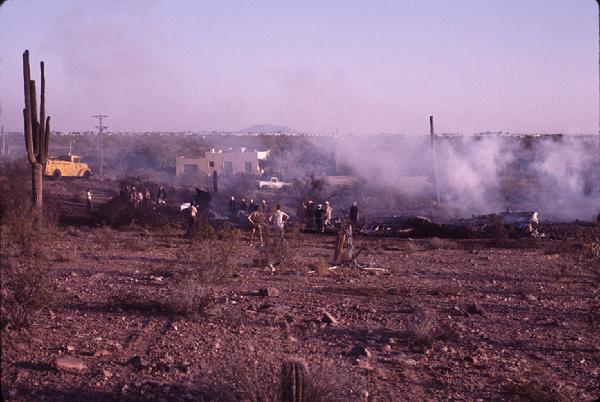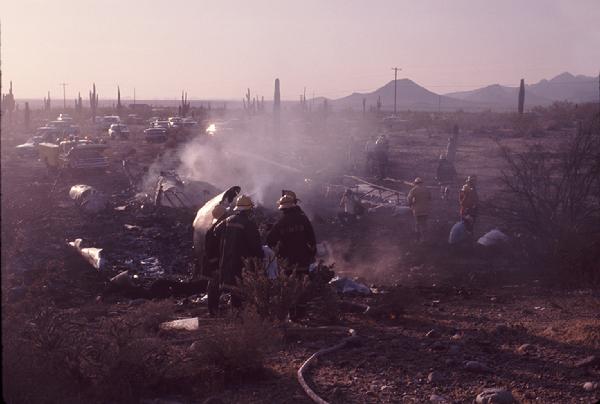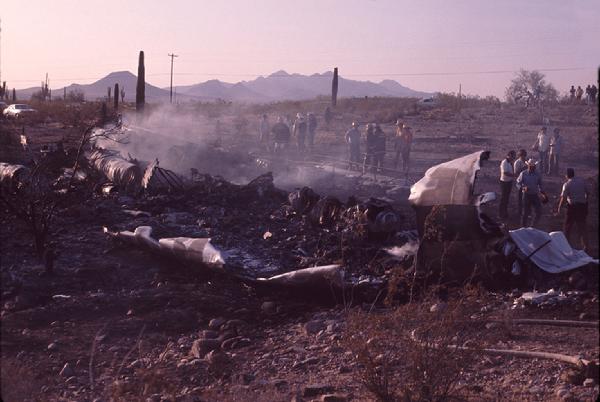Crash of a Lockheed L-1049H Super Constellation in Mesa: 6 killed
Date & Time:
Registration:
N45516
Survivors:
No
Schedule:
Mesa - Kansas City
MSN:
4840
YOM:
1958
Crew on board:
3
Crew fatalities:
Pax on board:
3
Pax fatalities:
Other fatalities:
Total fatalities:
6
Captain / Total hours on type:
170.00
Circumstances:
Just after liftoff, while in initial climb, all four engines lost power. The captain attempted an emergency landing in a desert area when the airplane struck trees and crashed in flames few miles from the airport. The aircraft was totally destroyed by a post crash fire and all six occupants were killed. They were on their way to Kansas City to deliver the aircraft.
Probable cause:
Inadequate preflight preparation on part of the pilot-in-command. The following contributing factors were reported:
- Inadequate supervision of flight,
- Collision with trees,
- Engine structure and powerplant denotation,
- High obstructions,
- Overheated,
- Ran out of ADI fluid,
- All engines damaged internally.
- Inadequate supervision of flight,
- Collision with trees,
- Engine structure and powerplant denotation,
- High obstructions,
- Overheated,
- Ran out of ADI fluid,
- All engines damaged internally.
Final Report:










